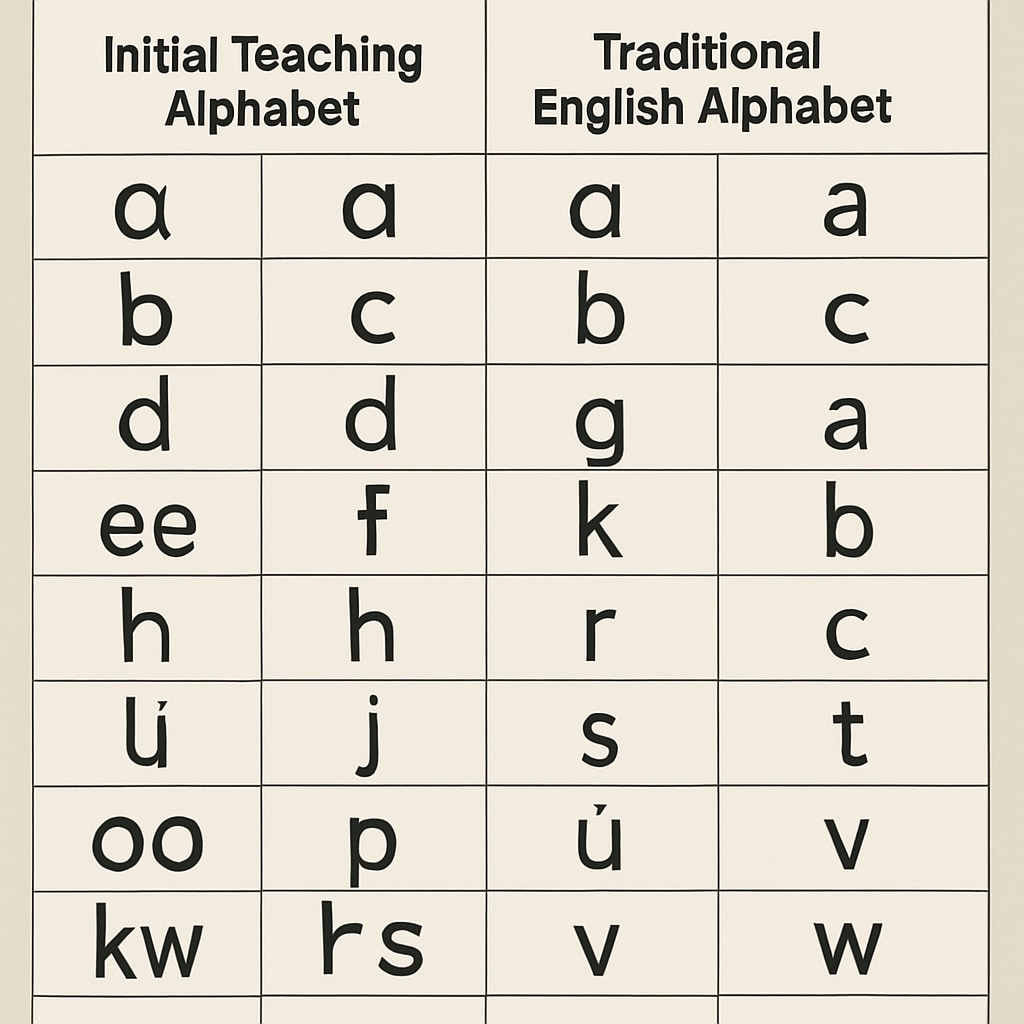The Initial Teaching Alphabet (ITA), a literacy innovation introduced during the 70s education movement, was designed to simplify the process of learning to read and write. By utilizing a unique 44-character alphabet, ITA aimed to provide a phonetic representation of English sounds, making it easier for young learners to grasp the fundamentals of literacy. However, while the method initially garnered interest and adoption, its long-term influence on spelling skills has sparked debates among educators and linguists alike.
What Was the Initial Teaching Alphabet?
The ITA was developed by Sir James Pitman in the 1960s as a transitional alphabet to help children master reading and writing before transitioning to standard English orthography. Unlike the traditional 26-letter English alphabet, ITA introduced additional characters to represent specific sounds, reducing the complexity of English spelling rules. Advocates believed this phonetic approach would streamline literacy acquisition, particularly for struggling learners.
While ITA was widely adopted in schools across the UK, the US, and other nations during the 70s, it was ultimately abandoned within a few decades. The ambitious method faced significant criticism, especially regarding its unintended effects on students’ long-term spelling abilities.

The Challenges of Transitioning to Standard English
One of the major drawbacks of the ITA was the difficulty students faced when transitioning from the phonetic system to the standard English alphabet. This process often led to confusion, as children struggled to reconcile the simplified spelling rules of ITA with the irregularities of traditional English orthography. For example, words like “know” or “through” in traditional spelling bear little resemblance to their phonetic counterparts in ITA.
As a result, many students who learned to read and write using ITA retained spelling inconsistencies even into adulthood. Their reliance on phonetic spelling sometimes led to errors in formal writing and communication.
Long-Term Impacts on Spelling Skills
Studies conducted in the years following ITA’s decline revealed mixed results. While some students demonstrated enhanced phonemic awareness (the ability to distinguish sounds in words), others showed persistent difficulties with standard spelling conventions. In particular, the ITA method appeared to hinder the development of automatic spelling recall—a skill necessary for efficient writing.
Moreover, critics argued that ITA did not adequately prepare students for the complexities of English spelling rules, which are influenced by historical, linguistic, and cultural factors. Ultimately, many educators concluded that the method’s short-term benefits did not outweigh its long-term disadvantages.

Lessons Learned from the ITA Experiment
The rise and fall of the Initial Teaching Alphabet provide valuable insights into the challenges of educational innovation. While the method’s phonetic focus was well-intentioned, its implementation highlighted the importance of aligning transitional learning systems with long-term language development goals.
- Phonetic methods must account for the complexities of language structure and historical orthography.
- The transition from simplified systems to standard systems should be seamless to prevent confusion.
- Educational experiments require rigorous, longitudinal studies to assess their impact on foundational skills like spelling.
Today, ITA serves as a cautionary tale for educators and policymakers seeking to reform literacy instruction. Its legacy underscores the need for a balanced approach that prioritizes both accessibility and accuracy in language education.
Readability guidance: The article uses manageable sentence lengths and concise paragraphs to ensure clarity. Transition words like “however,” “moreover,” and “ultimately” facilitate smooth reading and logical flow between ideas. The lists and images enhance engagement while summarizing key points effectively.


